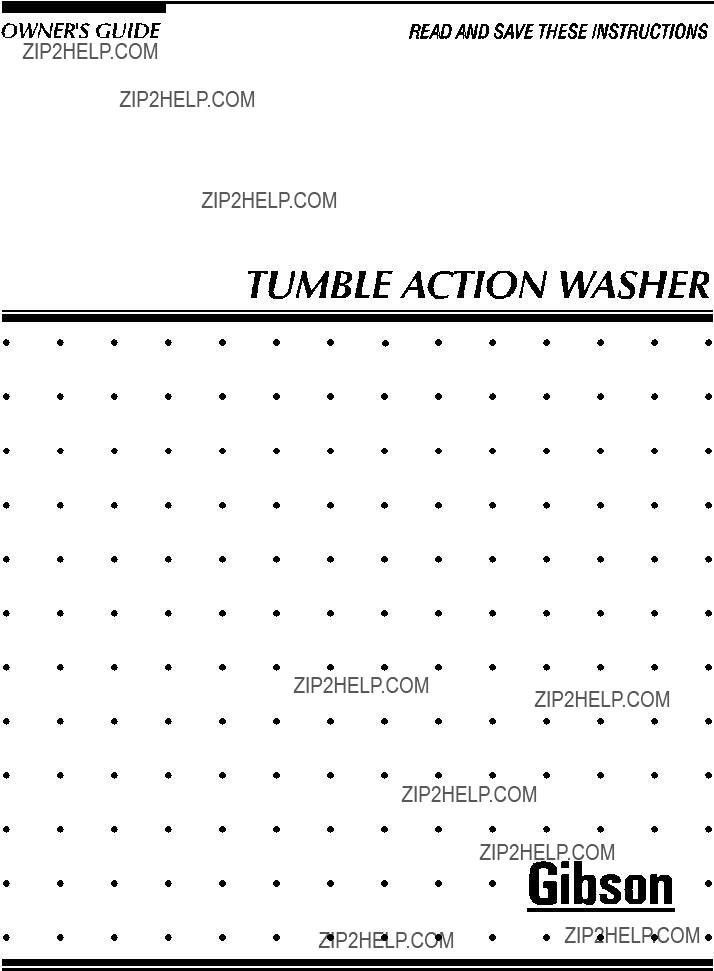
P/N 131945200 (0002)

P/N 131945200 (0002)
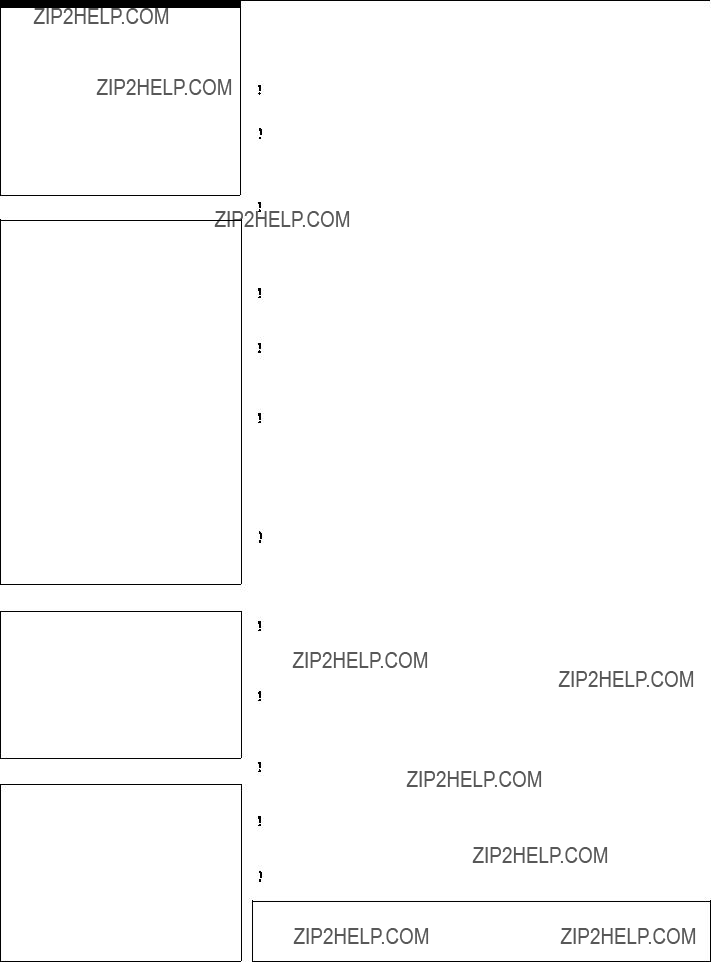
Product Registration
Thank you for choosing this washer. This owner's guide will explain proper operation and care.
Record Your Model and Serial
Numbers
Record below the model and serial numbers found on the washer serial plate located at the top, inside of the door opening. Keep these numbers for future reference.
Model Number __________________
Serial Number ___________________
Date of Purchase _________________
Register Your Product
The
Important Safety Instructions
Read all instructions before using this washer.

 To reduce the risk of fire, electrical shock, or injury to persons when using this washer, comply with the basic warnings listed below.
To reduce the risk of fire, electrical shock, or injury to persons when using this washer, comply with the basic warnings listed below.
 Failure to comply with these warnings could result in serious personal injuries.
Failure to comply with these warnings could result in serious personal injuries.
Prevent Fire

 Do not wash items that have been previously cleaned in, soaked in, or spotted with gasoline, cleaning solvents, kerosene, cooking oils, waxes, etc. Do not store these items on or near the washer. These substances give off vapors or chemical reactions that could ignite or explode.
Do not wash items that have been previously cleaned in, soaked in, or spotted with gasoline, cleaning solvents, kerosene, cooking oils, waxes, etc. Do not store these items on or near the washer. These substances give off vapors or chemical reactions that could ignite or explode.

 Do not put oily or greasy rags or clothing on top of the washer. These substances give off vapors that could ignite the materials.
Do not put oily or greasy rags or clothing on top of the washer. These substances give off vapors that could ignite the materials.

 Do not add gasoline, cleaning solvents, or other flammable or explosive substances to the wash water. These substances give off vapors that could ignite or explode.
Do not add gasoline, cleaning solvents, or other flammable or explosive substances to the wash water. These substances give off vapors that could ignite or explode.

 Under certain conditions, hydrogen gas may be produced in a hot water system that has not been used for 2 weeks or more. HYDROGEN GAS IS EXPLOSIVE. If the hot water system has not been used for such a period, before using the washer, turn on all hot water faucets and let the water flow from each for several minutes. This will release any accumulated hydrogen gas. Hydrogen gas is flammable; do not smoke or use an open flame during this time.
Under certain conditions, hydrogen gas may be produced in a hot water system that has not been used for 2 weeks or more. HYDROGEN GAS IS EXPLOSIVE. If the hot water system has not been used for such a period, before using the washer, turn on all hot water faucets and let the water flow from each for several minutes. This will release any accumulated hydrogen gas. Hydrogen gas is flammable; do not smoke or use an open flame during this time.
 Failure to comply with these warnings could result in fire, explosion, serious bodily injury and/or damage to the rubber or plastic parts of the washer.
Failure to comply with these warnings could result in fire, explosion, serious bodily injury and/or damage to the rubber or plastic parts of the washer.
Instructional Video
An instructional video has been included with your washer. It highlights features unique to this tumble action washer and will help you operate your washer correctly. This video is especially helpful if your previous washer was a
This Owner's Guide provides general operating instructions for your washer. It also contains information about features for several other models. Your washer may not have every feature included here.
Use the washer only as instructed in this Owner's Guide and the Operating Instructions card included with your washer.
Protect Children

 Do not allow children to play on or in the washer. Close supervision of children is necessary when the washer is used near children. As children grow, teach them the proper, safe use of all appliances.
Do not allow children to play on or in the washer. Close supervision of children is necessary when the washer is used near children. As children grow, teach them the proper, safe use of all appliances.

 Destroy the carton, plastic bag and other packing materials after the washer is unpacked. Children might use them for play. Cartons covered with rugs, bedspreads or plastic sheets can become airtight chambers.
Destroy the carton, plastic bag and other packing materials after the washer is unpacked. Children might use them for play. Cartons covered with rugs, bedspreads or plastic sheets can become airtight chambers.

 Keep laundry products out of children's reach. To prevent personal injury, observe all warnings on product labels.
Keep laundry products out of children's reach. To prevent personal injury, observe all warnings on product labels.

 Before the washer is removed from service or discarded, remove the washer door to prevent accidental entrapment.
Before the washer is removed from service or discarded, remove the washer door to prevent accidental entrapment.
 Failure to comply with these warnings could result in serious personal injuries.
Failure to comply with these warnings could result in serious personal injuries.
FOR YOUR SAFETY
Do not store or use gasoline or other flammable vapors or liquids in the vicinity of this or any other appliance.
All rights reserved.
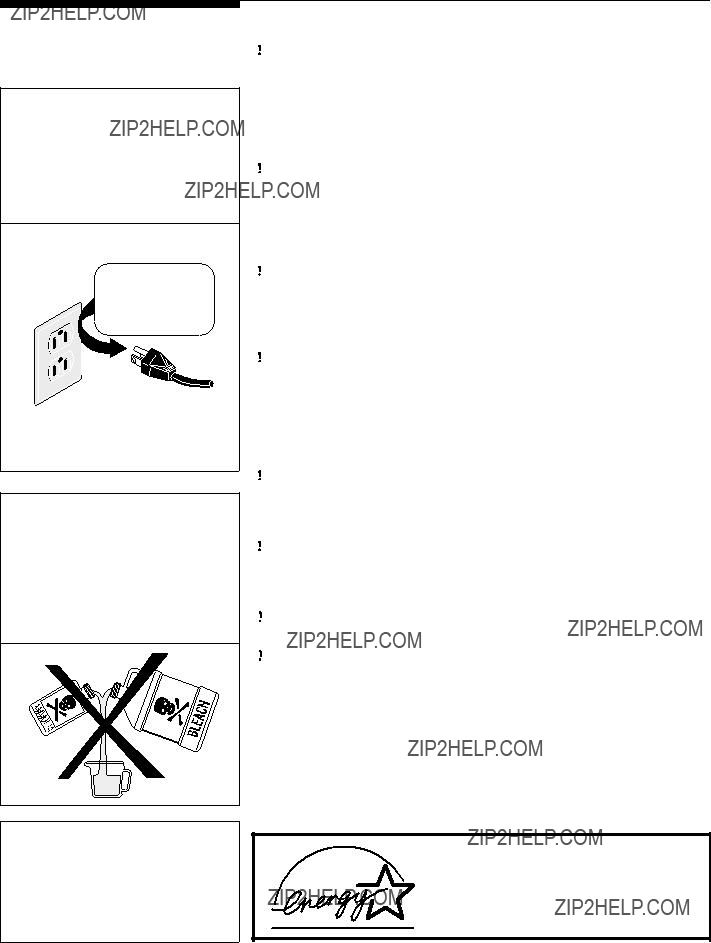
Important Safety
Instructions (continued)




 Avoid fire hazard or electrical shock. Do not use an adaptor plug or extension cord or remove grounding prong from electrical power cord. Failure to follow this warning can cause serious injury, fire or death.
Avoid fire hazard or electrical shock. Do not use an adaptor plug or extension cord or remove grounding prong from electrical power cord. Failure to follow this warning can cause serious injury, fire or death.
Grounding type wall receptacle
Do not under
any circumstances cut, remove,
or bypass
the grounding prong from this plug.
Power supply cord with
CORRECT
Use this way ONLY




 Do not use or mix liquid chlorine bleach with other household chemicals such as toilet cleaners, rust removers, acid or products containing ammonia. These mixtures can produce dangerous fumes which can cause serious injury or death.
Do not use or mix liquid chlorine bleach with other household chemicals such as toilet cleaners, rust removers, acid or products containing ammonia. These mixtures can produce dangerous fumes which can cause serious injury or death.
Prevent Injury

 To prevent shock hazard and assure stability during operation, the washer must be installed and electrically grounded by a qualified service person in accordance with local codes. Installation instructions are packed in the washer for installer's reference. Refer to INSTALLATION INSTRUCTIONS for detailed grounding procedures. If the washer is moved to a new location, have it checked and reinstalled by a qualified service person.
To prevent shock hazard and assure stability during operation, the washer must be installed and electrically grounded by a qualified service person in accordance with local codes. Installation instructions are packed in the washer for installer's reference. Refer to INSTALLATION INSTRUCTIONS for detailed grounding procedures. If the washer is moved to a new location, have it checked and reinstalled by a qualified service person.

 To prevent personal injury or damage to the washer, the electrical power cord of the washer must be plugged into a properly grounded and polarized
To prevent personal injury or damage to the washer, the electrical power cord of the washer must be plugged into a properly grounded and polarized

 Follow package directions when using laundry products. Incorrect usage can produce poisonous
Follow package directions when using laundry products. Incorrect usage can produce poisonous
???Do not combine laundry products for use in 1 load unless specified on the label.
???Do not mix chlorine bleach with ammonia or acids such as vinegar.

 To prevent serious personal injury and damage to the washer:
To prevent serious personal injury and damage to the washer:
???All repairs and servicing must be performed by an authorized servicer unless specifically recommended in this Owner's Guide. Use only authorized factory parts.
???Do not tamper with controls.
???Do not install or store the washer where it will be exposed to the weather.

 To reduce the risk of electric shock, disconnect this appliance from the power supply before attempting any user maintenance. Turning the controls to the OFF position does not disconnect this appliance from the power supply.
To reduce the risk of electric shock, disconnect this appliance from the power supply before attempting any user maintenance. Turning the controls to the OFF position does not disconnect this appliance from the power supply.

 To prevent injury, do not reach into the washer while parts are moving. Before loading, unloading or adding items, push in the cycle selector knob and allow the drum to coast to a complete stop before reaching inside.
To prevent injury, do not reach into the washer while parts are moving. Before loading, unloading or adding items, push in the cycle selector knob and allow the drum to coast to a complete stop before reaching inside.
 Failure to comply with these warnings could result in serious personal injuries.
Failure to comply with these warnings could result in serious personal injuries.
 This washer is equipped with an electrical overload protector. The motor will stop if it becomes overheated. The washer will automatically restart after a cool down period of up to 30 minutes, if the washer has not been manually turned off during this time.
This washer is equipped with an electrical overload protector. The motor will stop if it becomes overheated. The washer will automatically restart after a cool down period of up to 30 minutes, if the washer has not been manually turned off during this time.
SAVE THESE INSTRUCTIONS
Note: The instructions appearing in this Owner's Guide are not meant to cover every possible condition and situation that may occur. Common sense and caution must be practiced when installing, operating and maintaining any appliance.
As an ENERGY STAR?? Partner, Frigidaire Home Products has determined
that this product meets the ENERGY STAR?? guidelines for energy efficiency.
3

Washing Procedures
Sort laundry into loads that can be washed together.
???Follow the guidelines below for preparing the wash load.
???Read the Operating Instructions card for operating your specific model.
???Always read and follow fabric care and laundry product labels.

 To reduce the risk of fire, electrical shock, or injury to persons, read Important Safety Instructions, pages
To reduce the risk of fire, electrical shock, or injury to persons, read Important Safety Instructions, pages
1. Sort laundry into loads that can be washed together.
Sort items by recommended water temperatures and wash time.
???Separate white, light, and colorfast items from dark and noncolorfast items.
???Separate items which shed lint from items which attract lint. Permanent press, synthetic, knit and corduroy items will pick up lint from towels, rugs and chenille bedspreads.
???Separate heavily soiled items from lightly soiled items.
???Separate lacy, sheer and loosely knit items from sturdy items.
2. Prepare items for washing.
Place delicate items in a mesh bag.
Add laundry load to washer.
3. Pretreat stains and heavy soil.
See Stain Removal, pages
4.Add laundry load to washer.
???Combine large and small items in a load. Load large items first. Large items should not be more than half the total wash load.
???Do not wash single items such as a sweater, towel or jeans. This may cause an
???Single heavy items such as a bedspread can be washed separately.
???The washer can be fully loaded, but the items should not be tightly packed. The door should close easily.
4
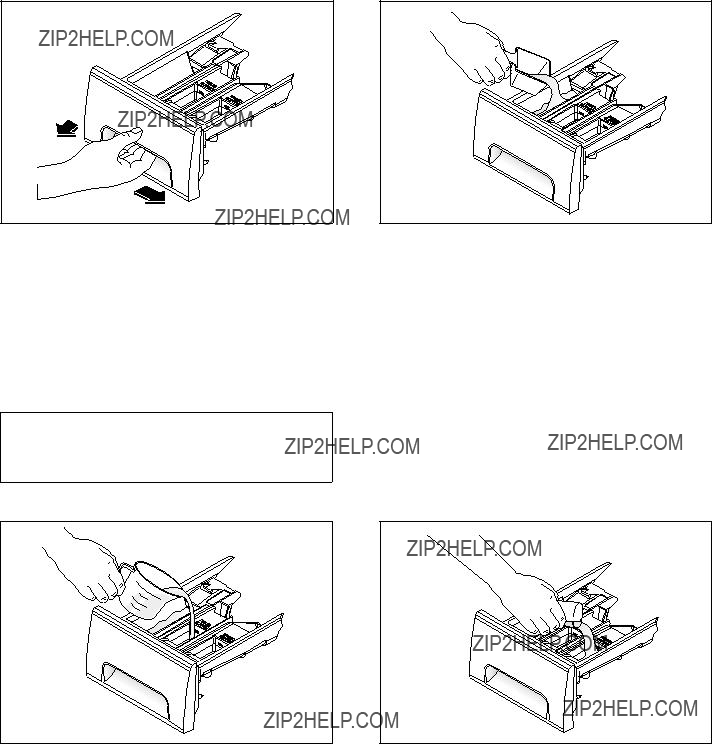
5. Add detergent, bleach and fabric softener to automatic dispenser following these steps:
A.OPENING AND CLOSING THE DISPENSER DRAWER
???Slowly open the dispenser drawer by first sliding the safety latch to the right, then pulling the drawer out until it stops.
???After adding laundry products, slowly close the dispenser drawer. Closing the drawer too quickly could result in early dispensing of the bleach and fabric softener.
B.DETERGENT
???Add measured detergent to the detergent compartment of the dispenser drawer.
???Detergent is flushed from the dispenser at the beginning of the cycle. Either powdered or liquid detergent can be used. Note: Liquid detergent will drain into the washer drum as it is added.
???Low sudsing detergent is recommended for this washer. Use the manufacturer's recommended amount.
Note: From time to time you may see water in the bleach and fabric softener compartments. This is a result of the siphoning action and is part of the normal operation of the washer.
C.LIQUID BLEACH
???If desired, measure out the recommended amount of liquid bleach (not to exceed 1/3 cup (80 mL)) and pour
it into the center compartment labeled "Liquid Bleach" and marked with this symbol  .
.
???Do not exceed the maximum fill line. Overfilling can cause early dispensing of the bleach which could result in damaged clothes.
???Do not use powdered bleach in the dispenser.
???Detergent usage may need to be adjusted for water temperature, water hardness, size and soil level of the load.
???For best results, avoid oversudsing. Final rinse water should be suds free.
D.FABRIC SOFTENER
???If desired, pour the recommended amount of fabric
softener into the compartment labeled "Fabric Softener" and marked with this symbol  .
.
???Do not exceed the maximum fill line. Overfilling can cause early dispensing of the fabric softener which could result in stained clothes.
???Do not pour fabric softener directly on the wash load.
5

6.Set cycle selector knob and washer controls according to type, size, and soil level of each load.
(See Operating Instructions card for your specific model controls.)
7. Start the washer.
Close the washer door and pull out the cycle selector knob. For your safety, the door will automatically lock during the entire wash cycle.
???Washer will fill; water level will be lower than bottom of the door.
???Washer will tumble the load in one direction, pause, then tumble in the other direction.
???To stop the washer, push in the cycle selector knob.
???To open the door during tumbling, push in the cycle selector knob. Wait for the water to run off of the door.
???To change a cycle, push in the cycle selector knob and turn it clockwise to the desired setting. Pull out the knob to restart the washer.
???To open the door during a spin cycle, push in the cycle selector knob and wait approximately 1 minute. The door can then be opened. Do not force open
the locked door.
Do not store or place laundry products on top of washer at any time. They can damage the finish or controls.
8. Remove items when the cycle is completed.
Place washed items in automatic dryer, line dry, or dry flat as directed by fabric care label. Excess wrinkling, color transfer or odors may develop in items left in the washer after the cycle has ended.
9.General Precautions
???If the dispenser drawer is pulled out more than
???Do not slam the washer door closed or try to force the door open when locked (Door Lock light ON). This could result in damage to the washer.
???DO NOT leave the washer door open. An open door could entice children to hang on the door or crawl inside the washer.
???To avoid damaging the washer and personal injury, DO NOT hang on or lean against the washer door.
???Do not place detergent, bleach or fabric softener containers on top of the washer. They can damage the finish or controls.
Stain Removal

 Do not use or mix liquid chlorine bleach with other household chemicals such as toilet cleaners, rust removers, acid or products containing ammonia. These mixtures can produce dangerous fumes which can cause serious injury or death.
Do not use or mix liquid chlorine bleach with other household chemicals such as toilet cleaners, rust removers, acid or products containing ammonia. These mixtures can produce dangerous fumes which can cause serious injury or death.
Safe Stain Removal Procedures




 To reduce the risk of fire or serious injury to persons or property, comply with the basic warnings listed below:
To reduce the risk of fire or serious injury to persons or property, comply with the basic warnings listed below:
???Read and comply with all instructions on stain removal products.
???Keep stain removal products in their original labeled containers and out of children's reach.
???Thoroughly wash any utensil used.
???Do not combine stain removal products, especially ammonia and chlorine bleach. Dangerous fumes may result.
???Never wash items which have been previously cleaned in, washed in, soaked in or spotted with gasoline, dry cleaning solvents or other flammable or explosive substances because they give off vapors that could ignite or explode.
???Never use highly flammable solvents, such as gasoline, inside the home. Vapors can explode on contact with flames or sparks.
6

For successful stain removal:
???Remove stains promptly.
???Determine the kind of stain, then follow the recommended treatment in the
stain removal chart below.
???To pretreat stains, use a prewash product, liquid detergent, or a paste made from granular detergent and water.
???Use cold water on unknown stains because hot water can set stains.
???Check care label instructions for treatments to avoid on specific fabrics.
???Check for colorfastness by testing stain remover on an inside seam.
???Rinse and wash items after stain removal.
Follow fabric care label instructions.
7
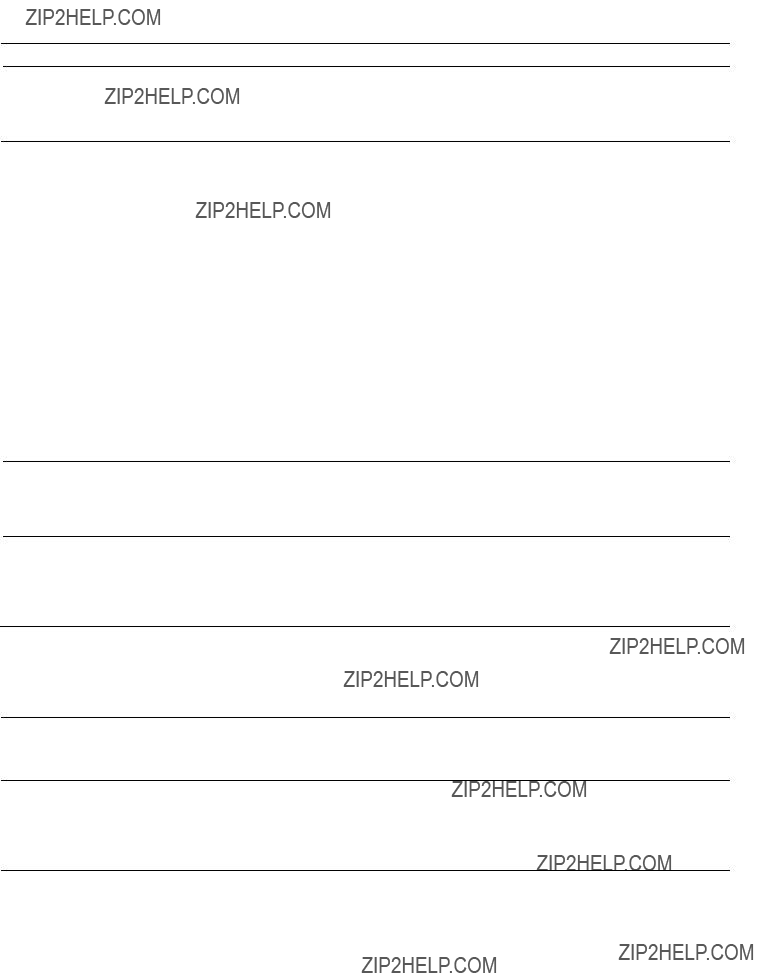
Common Washing Problems
Many washing problems involve poor soil and stain removal, residues of lint and scum, and fabric damage. For satisfactory washing results, follow these suggestions provided by The Soap and Detergent Association.
???If caused by detergent, mix 1 cup (240 ml) white vinegar with 1 quart (.95 L) water in a plastic container. Soak item 1 hour. Rinse.
???If caused by fabric softener, rub stains with bar soap. Wash.
???Avoid overfilling detergent and fabric softener compartments of dispenser.
???Reduce load size. Rewash using correct water temperature, water level, and amount of detergent.
???Add nonprecipitating water conditioner to wash water to remove detergent residue.
??? Add liquid fabric softener to final rinse. ???Dry load in dryer.
???Remove lint with lint brush or roller.
???See Washing Procedures for sorting and preparing the wash load.
???Do not overload washer.
???Use correct temperature and amount of detergent, water and wash time.
Pilling
(Fibers break off, ball up and cling to fabric.)
"Polka dots" (small circles of lint and soil on load after cycle ends)
???Wash temperature too low. ???Not enough detergent. ???Water is hard.
???Incorrect sorting.
???Rewash in hottest water safe for fabrics. ???Use correct water temperature and amount
of detergent.
???Use hottest water safe for fabric.
???Use correct water temperature and amount of detergent.
???Use nonprecipitating water conditioner. ???Avoid overfilling detergent and fabric
softener compartments of dispenser.
Residue or powder on dark items; Stiff, harsh fabrics.
detergents can combine with hard water minerals to form a residue.
???Overloading the washer.
???Increase water temperature using hottest water safe for fabric.
???Do not overload washer.
???Use liquid detergent or use nonprecipitating water conditioner with nonphosphate granular detergent.
???Do not overload washer.
???Remove items from washer as soon as cycle is completed.
???Use liquid fabric softener.
Yellow buildup of body soil on synthetic fabrics
???Select correct wash cycle.
???Use correct amount of detergent. ???Wash synthetics frequently using hot or
warm water.
???To restore discolored load of whites, use rust remover safe for fabric.
???Do not use chlorine bleach to remove rust stains. It may intensify discoloration.
???Use nonprecipitating water softener. ???Before washing, run hot water for a few
minutes to clear lines.
???Drain water heater occasionally.
???For an ongoing problem, install an iron filter in your water supply system.
8
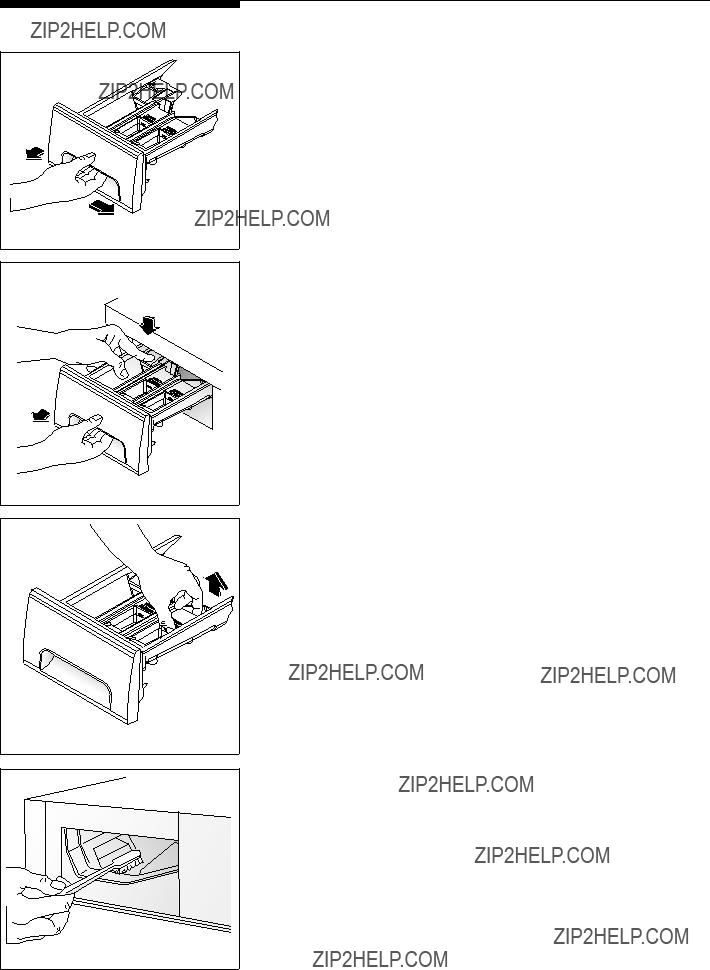
Outside
???When washing is completed, wipe top and sides of washer with a damp cloth. Turn water faucets off to prevent pressure
???As needed, clean the cabinet with mild soap and water. Never use harsh, gritty or abrasive cleansers. If door or console becomes stained, clean with diluted chlorine bleach [1/2 cup (120 ml) in 1 quart (.95 L) water]. Rinse several times with clear water.
???Remove glue residue from tape or labels with a mixture of warm water and mild detergent. Or, touch residue with the sticky side of the tape or label.
???Before moving the washer, place a strip of cardboard or thin fiberboard under the front leveling legs to prevent floor damage.
(Lock tab is visible only after drawer has been pulled out)
Figure 2
Cleaning the Dispenser Drawer Area
Detergent and fabric softener may build up in the dispenser drawer. Residue should be removed once or twice a month.
???Remove the drawer by first sliding the safety latch to the right, then pulling the drawer out until it stops. (Figure 1)
???Reach back into the left rear corner of the drawer cavity and press down firmly on the lock tab (left rear portion of the drawer). Pull out the drawer. (Figure 2)
???Remove the inserts from the bleach and fabric softener compartments. (Figure 3)
???Rinse the drawer and inserts with hot tap water to remove traces of accumulated powders and liquids.
???To clean the drawer opening, use a small brush to clean the recess. Remove all residue from the upper and lower parts of the recess. (Figure 4)
???Return the bleach and fabric softener inserts to their proper compartments. Replace the dispenser drawer and run the Prewash cycle without any wash load in the drum.
Inside
???Remove items from the washer as soon as the cycle ends. Excess wrinkling, color transfer, and odors may develop in items left in the washer.
???Before cleaning the washer interior, unplug the electrical power cord to avoid electrical shock hazards.
???Dry around the washer door opening, flexible gasket, and door glass. These areas should always be clean to ensure a water tight seal.
???When extremely soiled items have been washed, a dirty residue may remain on the drum. Remove this by wiping the drum with a nonabrasive household cleanser. Rinse thoroughly with water.
???The plastic drum vanes may become stained from fabric dye. Clean these parts with a nonabrasive household cleanser. This prevents dye transfer to future loads.
9
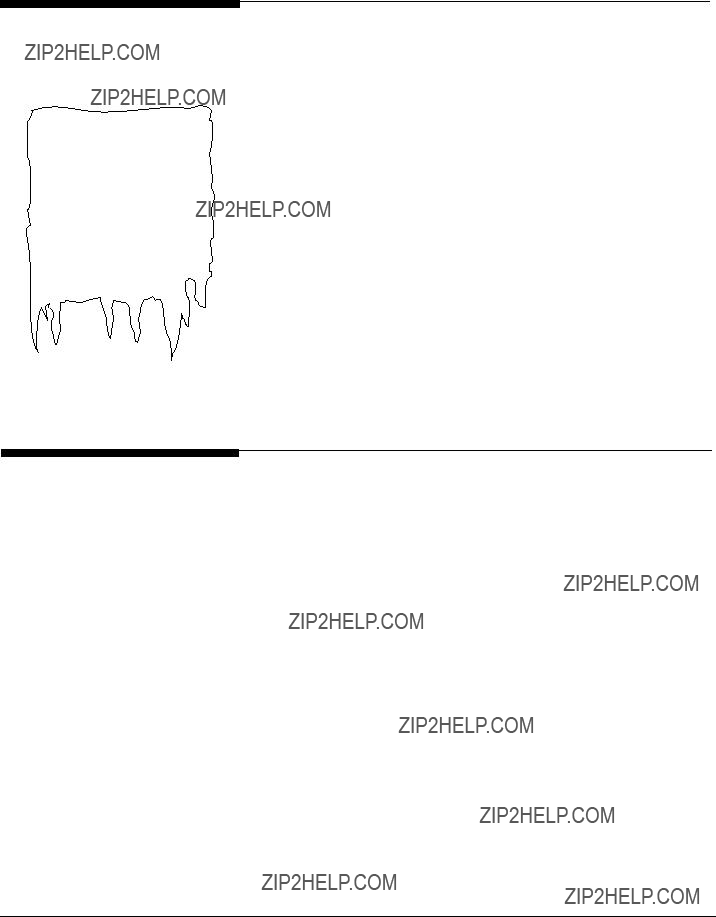
Care and Cleaning
(continued)
Follow Winterizing Instructions for cold weather care.
Winterizing Instructions
If the washer is stored in an area where freezing can occur or moved in freezing temperatures, follow these winterizing instructions to prevent damage to the washer:
1.Turn off water supply faucets.
2.Disconnect hoses from water supply and drain water from hoses.
3.Plug electrical cord into a properly grounded electrical outlet.
4.Add 1 gallon (3.8 L) nontoxic recreational vehicle (RV) antifreeze to empty wash drum. Close door.
5.Set cycle selector knob at a spin setting. Pull out knob and let washer spin for 1 minute to drain out all water. Not all of the RV antifreeze will be expelled.
6.Push in knob, unplug electrical power cord, dry drum interior, and close door.
7.Remove dispenser drawer. Drain any water in compartments and dry compartments. Replace drawer.
8.Store washer in an upright position.
9.To remove antifreeze from washer after storage, run empty washer through a complete cycle using detergent. Do not add wash load.
Avoid Service Checklist
Before calling for service, review this list. It may save both time and expense. The list includes common concerns that are not the result of defective workmanship or materials in this washer.
??? Shipping bolts and foam block have not been removed during installation. See INSTALLATION INSTRUCTIONS for removing shipping bolts and foam block.
??? Wash load unevenly distributed in drum. Stop washer and rearrange wash load.
10
11

GIBSON TUMBLE ACTION WASHER WARRANTY
(UNITED STATES)
Your Gibson product is protected by this warranty
Your appliance is warranted by Frigidaire Company, a division of White Consolidated Industries, Inc. We authorize no person to change or add to any of our obligations under this warranty. Our obligations for service and parts under this warranty must be performed by Frigidaire Company Consumer Services or an authorized Gibson servicer.
*IMPORTANT
RESPONSIBILITIES
OF THE CONSUMER
This warranty applies only to products in ordinary household use, and the consumer is responsible for the items listed below:
1.Proper use of the appliance in accordance with instructions provided with the product.
2.Proper installation by an authorized servicer in accordance with instructions provided with the appliance and in accordance with all local plumbing, electrical and/or gas codes.
3.Proper connection to a grounded power supply of sufficient voltage, replacement of blown fuses, repair of loose connections or defects in house wiring.
4.Expenses for making the appliance accessible for servicing, such as removal of trim, cupboards, shelves, etc., which are not a part of the appliance when it was shipped from the factory.
5.Damages to finish after installation.
6.Replacement of light bulbs and/or fluorescent tubes (on models with these features).
IF YOU NEED
SERVICE
Keep your bill of sale, delivery slip, or some other appropriate payment record. The date on the bill establishes the warranty period should service be required. If service is performed, it is in your best interest to obtain and keep all receipts. This written warranty gives you specific legal rights. You may also have other rights that vary from state to state. Service under this warranty must be obtained by following these steps, in order:
1.Contact Frigidaire Company Consumer Services or an authorized Gibson servicer.
2.If there is a question as to where to obtain service, contact our Consumer Assistance Center at:
Frigidaire Company
P.O. Box 212378
Augusta, Georgia 30917
(800)
Product features or specifications as described or illustrated are subject to change without notice. All warranties are made by White
Consolidated Industries, Inc. This warranty applies only in the 50 states of the U.S.A. and Puerto Rico.
12
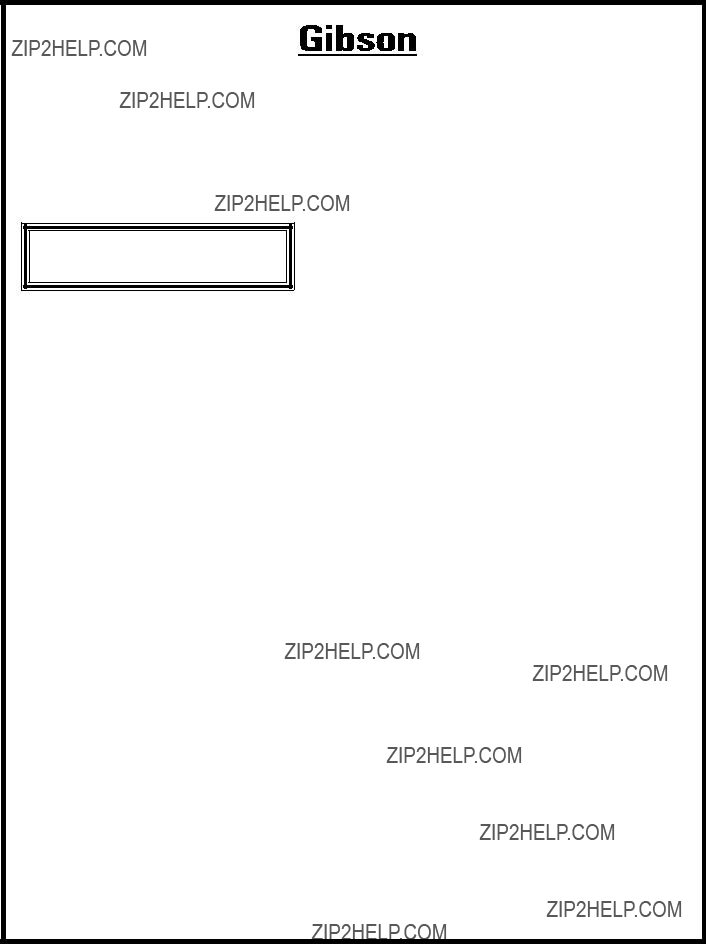
WARRANTY (CANADA)
TUMBLE ACTION WASHERS
WARRANTOR:
Frigidaire Home Products
7075 Ordan Drive
Mississauga, Ontario
L5T 1K6
Warranty Coverage
To Be Advised.
For service under this warranty, contact your local dealer/retailer, authorized
SERVICE depot, or:
FRIGIDAIRE PARTS AND SERVICE
Frigidaire Home Products
7075 Ordan Drive
Mississauga, Ontario
WARRANTY PERIOD:
For the first year after purchase by the original consumer/owner:
For the second year after purchase by the original consumer/owner:
For the third through
WARRANTY APPLIES TO:
WARRANTOR WILL THROUGH ITS AUTHORIZED
SERVICE DEPOT:
Pay for parts and labour (excluding installation).
Pay for parts only.
Pay parts only replacement of stainless steel tub.
a)Products purchased and installed in Canada for personal single family household use.
b)Defects resulting or arising out of the manufacturing process.
c)Products bearing legible manufacturer's model and serial numbers.
d)Replacement parts only for the remainder of the original warranty.
WARRANTY DOES NOT APPLY TO:
a)Transportation damage.
b)Supply and replacement of porcelain, fuses, glass and light bulbs.
c)Parts and service supplied or obtained from other than FRIGIDAIRE PARTS AND SERVICE or FRIGIDAIRE PARTS AND SERVICE authorized depots.
d)Damage or failure as the result of abuse, improper or commercial use.
CONSUMER/OWNER RESPONSIBILITY:
a)To provide proof of the original date of purchase by means of a bill of sale or payment record verifying purchase date.
b)To pay all costs to make the appliance readily accessible for service.
c)To ensure proper power supply and connection of the appliance to same.
d)Proper installation, control setting and care of finish.
This warranty is in addition to any statutory warranties contained in any applicable legislation. The terms and conditions of this warranty are not intended to exclude or limit your rights under those statutes. The warrantor however reserves the right to charge transportation and travelling costs for distances in excess of 48 kilometres (30 miles) from the nearest FRIGIDAIRE PARTS AND SERVICE authorized service depot.
This warranty plus the statutory warranties mentioned are the only warranties given to the consumer/owner for this product.
13
[DO NOT PRINT ???
English Page 14 to be left intentionally blank.
See P/N 131630300 for example, if needed.]